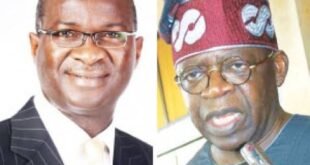The next Pope will be chosen by the College of Cardinals, the most senior figures of the Catholic Church appointed by the Pontiff, who will head to Rome in the next few days for the conclave. The name derives from the Latin cum club, which means “with key”, indicating the closed process to elect a pope.
There are more than 250 cardinals from over 90 countries, but only about 135 are cardinal voters (those over the age of 80 are excluded). About 110 of the cardinal voters have been chosen by Francis in the last 10 years and largely reflect his vision of a more inclusive church.
Once the cardinals were assembled in Rome, usually 15-20 days after the Pope’s death, they gather under the magnificent painted ceiling of Michelangelo in the Sistine Chapel to start their resolutions. After the extra omnes words – all outside – they are declared, referring to everyone except to voting cardinals and a handful of officials and doctors, the doors are blocked.
Cardinals swear an oath of absolute secrecy and no contact with the external world for the duration of the electoral process is allowed. Their phones are removed and newspapers, television, letters or messages are not allowed. The chapel is also swept for listening devices before and during the conclave.
The cardinals sleep and eat in a specially built hostel, the house of St Martha, near the Sistine Chapel, where Pope Francis has lived in the last 12 years.
The conclave begins with a celebration of the mass, after which resolutions and voting begin. The votes are taken every day, morning and afternoon, until a candidate wins a two -third majority. There is a break for prayer and reflection every seven voting. The longest papal conclave in recent history was 1922, when the cardinals took five days to choose their new leader.
Any baptized male can be elected as a pope, although a portional cardinal is invariably chosen. Each voter is given an electoral card with the words Eligo in Summum Pontififim (elected as a supreme Ponteff) printed at the top. They insert the name of their choice, bend the paper and let it fall into a glass.
The vote is secret, but this does not mean that the process is immune from faction, intrigues and pressures.
After each voting round, the electoral cards are burned. Chemicals are added to make black or black smoke. The black smoke that emerges from the 60 feet fireplace indicates an inconclusive vote; White smoke announces to the world that a new pope has been elected.
The chosen candidate is asked if he accepts the elections and, in this case, which name chooses to take as a pontiff. The cardinals commit obedience to the new pope, who is conducted in the adjacent room of tears to be dressed with a white tunic and a cap for a skull and red slippers. Three sets of different sizes will have been made in advance by the Vatican tailors.
The dean of the Cardinals approaches the main balcony of the Basilica of San Pietro, in front of which thousands of Catholic devotees and tourists will be collected. The dean will declare: “Annunio Vobis Gaudium Magnum: Habemus Papam” – “I announce you with great joy: we have a pope”.

● This article was modified on April 21, 2025. An previous version said that 120 cardinals can vote for the Pope, two of which were chosen by Francis; In fact, these figures are approximately 135 and 110. Furthermore, a reference to a simple acceptable majority has been removed after 30 days of inconclusive vote have been removed.
 JamzNG Latest News, Gist, Entertainment in Nigeria
JamzNG Latest News, Gist, Entertainment in Nigeria












